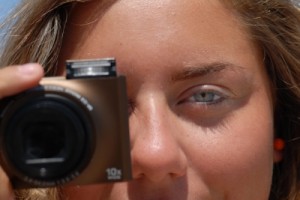How To Take Great Photos Using a Digital Camera
Today, we have the privilege of learning from
Kristen Swope, a mom, wife, and a freelance writer for Backyard Ocean.
She is here to teach us how to take great photos
using a digital camera.
This is huge, (because I struggle in this department!)
Actually, every one of my tutorial posts has a
lame excuse as to why my pictures aren’t that great.
But the truth is, I just didn’t know how to really
make the most of my digital camera.
Well, lucky for us, Kristen is going to walk us through the process.
Taking Great Photos with A Digital Camera
Have you ever wondered how professional photographers make dull subjects look intriguing? The key to producing great photographs isn’t the equipment you use. Although SLR cameras take stunning shots of just about anything, they’re useless if you don’t know how to work around its features.
Point-and-shoot cameras may be simpler, but they can still capture the beauty of subjects if used properly and creatively. Here are a few tips on how to make the most of your digital camera:
- Get a good perspective of your subject.
The rule of thumb is to take shots within the eye level of your subject. This makes pictures engaging, especially when your subject is a child. However, you can bend this rule a bit by altering your camera’s perspective. Taking pictures of your subject from different angles can make your composition more interesting. Shoot up or shoot down—by experimenting, you will see which shot best captures the essence of your subject better.
- Learn the rule of thirds.
One technique photographers often use is the rule of thirds. The rule is about breaking down a composition into three parts, both horizontally and vertically. Imagine a 3-by-3 grid on your camera viewfinder or chip on glass LCD screen. The idea is to place your subject along intersections on the grid, as opposed to having it in the center of the photo. Most photographers discourage placing subjects in the very center because of its “bland” effect.
- Use flash sparingly.
Digital cameras have an automatic flash that you can use for low-light settings. Camera flash is a bit tricky to manipulate, as there are diverse flash ranges on different cameras. Once you are familiar with the flash settings of your camera, adjust it according to what you think is appropriate.
The flash of your camera is not just for indoor use. Use it when there is insufficient outdoor light to make your subject stand out. Flash is only good for a couple of feet, though; if your subject is standing too far, you won’t be able to get a clear shot of him.
- Lock the focus of your camera.
The problem with digital cameras is that most of the time, they have a mind of their own. They focus on what they think your subject is and blur the rest. This should be convenient for the user, but it’s hard to manage when you want your subjects to be off-center. In this case, point your camera straight at your subject, half press the shutter button, and recompose the picture. There should be a notification – like brackets turning green, for example – to indicate that it’s focusing. Without releasing your finger on the shutter button, direct the camera to another point and you will still have a clear shot of your subject. By half-pressing, you also minimize shutter delay, which helps a lot when you’re trying to take fast-action photos.
With their intelligent functions, digital cameras are great for taking instant snapshots. However, they can be frustrating to use if you don’t know the right tricks. The key to taking great pictures is to have your camera with you everywhere you go. You never know when an interesting subject will come your way, and you could always benefit from the extra practice.
Author’s Bio:
Kristen works as a freelance writer for Backyard Ocean, an online store for above ground swimming pools, inflatable pool toys, and accessories. She has fallen in love with photography and plans to take advanced classes to enhance her skills.
